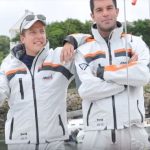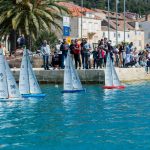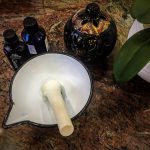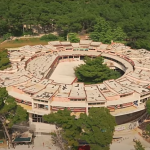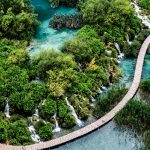While most of us are either on vacation or spend a lot of time thinking about one, competitive sailor Vedran Kabalin from Rijeka is planning an impressive expedition: sailing 4000 miles across the Atlantic on a 6.5m boat. He shared his story with Morski.hr, talking about what it takes to organise such a demanding venture and disclosing some details about the Mini Transat 6.50 regatta.
“The idea was born in 2011 when I sailed in Mini 560 class for the first time. I completed two regattas on the Atlantic coast of France and said: Never again! Never say never, though… So here I am, heading across the Atlantic in three months. The Atlantic is the tamest ocean, so it’s a good field to try out various ideas – recently, a man paddled across the ocean on a stand-up paddle (SUP) board in 93 days.
Mini Transat was conceived as early as 1977, when a crazy Englishman Bob Salomon thought of it first, gathered 25 single sailors, and they set off for a journey accross the Atlantic in wooden sailboats and wearing woollen jumpers. That was an undertaking. Today we have top quality gear and boats. The regatta is much faster as well, that’s the most challenging part. You need to sail as fast as you can, but at the same time you need to know your limits and not be tempted to cross them, because that can end up in disaster. I don’t even know my limits yet, I’ve never sailed solo across the Atlantic in a 6.5m boat. This year, some of the contestants (mostly French) are doing it for the second or even the third time. They are the favourites, as they know they can go a bit faster than the last time.
The organisers of Mini Transat are trying to minimise the risks of sailing solo in such a small boat. That’s why you need to qualify for the regatta; it takes place every two years, so the sailors have time to go through the strictly organised and demanding preparation process. You are subjected to most situations that simulate the ones you’ll experience on the Atlantic, but I’m sure that only actually being on the ocean is the real deal, the real experience.
I personally had most issues back when I hadn’t yet known what fatigue can do to a person sailing alone. It’s simultaneously funny and dangerous – complete lack of control over emotions and movements – that’s the funny part. The danger is that it all takes place on the open sea, where falling overboard equals the end. I’m in the phase of training for polyphasic sleep: unlike the standard sleeping rhythm (monophasic), polyphasic is composed of multiple naps of 20-50 minutes, so you build up to 5-6 hours of sleep in a day. While I’m still on land, I’m getting a couple of hours of uninterrupted peace during the night, that I use to catch up with remaining assignments. The bad side is, I often don’t know when a day starts and when it ends. Add to that the condition training, psychotherapy sessions, talking to a psychologist and a life-coach, all under the supervision of Dr Tomislav Furlan who’s in charge of that part of my preparations.”
“The other part entails getting the boat ready. Gumicentar d.o.o. from Rijeka is doing the hull and GRP, sails are manufactured by Ullman Sails from Kostrena, lines and rigging by Aspar Rigging from Matulji, Bocel d.o.o. from Mali Lošinj did the mechanic and hydraulic repairs, and I’m clothed by Musto-Mare Nostrum Croaticum from Opatija. The whole list of partners can be found here, and the latest news is that I signed a sponsorship contract with the Specialty Hospital Medico from Rijeka. Having a financial background means a lot, as the whole project is pretty expensive. Of course, my family and friends have our back (mine and my boat Eloa’s), because otherwise it wouldn’t make any sense to do things like these. I can’t express my gratitude enough to everyone who’s supporting me. I’m grateful even to those who haven’t supported me, as they’ve given me the strength to carry on.
Eloa, along with any other boat from the Mini class, can’t be compared with the regular notion of a boat on the Adriatic. These are little ocean speedsters, designed and manufactured exclusively so they could sail the open sea. The safety level on a Mini equals that on sailboats of the Imoca 60 class. Even its form is extremely stable, and all the systems on the boat are adapted to solo sailing. I’d dare say, the boats are often more prepared than the skippers, and they can endure more as well. More sea, more wind.
When you spend three years sailing exclusively on a Mini, you get used to it and the space doesn’t seem so small anymore. I see Eloa as a living being, I talk to her, I sweet-talk her as well, I scorn her, I sing to her. I know it doesn’t sound normal, but it is normal. With Eloa, I’m not even alone, you could say we’re sailing together. I don’t see that space as confined, I have more than enough space to live. Solo sailing in complete silence leads to a new outlook on life. Actually, we all carry that outlook inside ourselves, but it’s obscured by everyday stimuli that aren’t important in most cases… I’m looking forward to resting my soul during those silences, as my body won’t be getting any rest.
The regatta kicks off on October 1, 2017 in La Rochelle, France. The first leg is 1350 NM long and will take us to Las Palmas de Gran Canaria. The expected duration is ten days. This includes the most dangerous part of the regatta – the Bay of Biscay. The second leg starts form Las Palmas on November 1 and is 2700 NM long, with the finish line in Le Marin on Martinique. This part is expected to last up to 20 days. There are 84 competitors form 14 countries, 10 of them women… I think 60 of them are French, then you have Italians, Spanish, and two Croats. Three years of preparations for the amateur level cost around €90.000, including the purchase of a €30.000 boat.
I’ll sum up my goal in two words: peace and rest.”
Best of luck to Mr Kabalin in his upcoming adventure!

